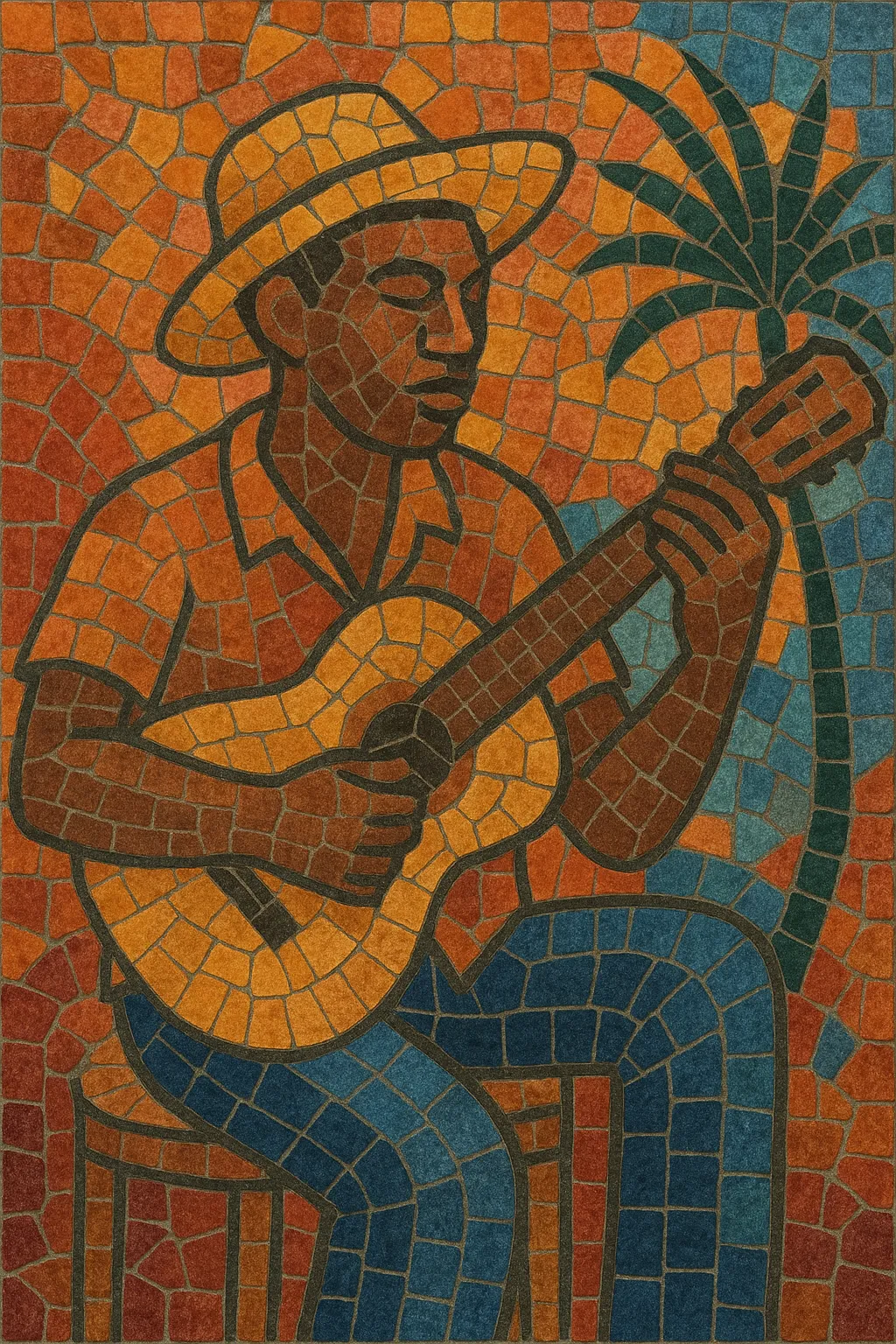Coladeira is a mid‑tempo dance song form from Cape Verde that sits between the introspective morna and the high‑energy funaná. It typically uses a lively but relaxed 2/4 or 4/4 meter with a buoyant, syncopated groove, inviting swaying and partner dancing.
Traditional ensembles revolve around acoustic guitar (violão), cavaquinho, bass, and light percussion, sometimes joined by violin, clarinet, or saxophone. Modern arrangements add drum set, keyboards, and horns for a polished, cosmopolitan sound. Harmonies are diatonic and song‑like (often I–IV–V with tasteful secondary dominants), supporting catchy, singable melodies.
Lyrics—most often in Cape Verdean Creole—blend humor, social observation, and romance, offering playful storytelling rooted in island life and the diaspora experience.
Coladeira emerged in Cape Verde in the 1930s as a faster, more extroverted offshoot of morna. Centered especially on São Vicente and Santiago, it adopted a sprightly dance pulse and witty, conversational lyrics, contrasting the slow, melancholic character of morna. Early ensembles featured violão (acoustic guitar), cavaquinho, and light percussion, occasionally with violin or clarinet.
Through dance halls, local radio (notably in Mindelo), and touring bands, coladeira became a staple of island festivities and urban nightlife. Songwriters such as Manuel de Novas helped define a modern repertoire, while interpreters like Bana and groups that would later form Os Tubarões brought the style to broader Lusophone audiences.
Cape Verdean migration to Europe (particularly Portugal, the Netherlands, and France) fostered exchanges with Caribbean and Lusophone styles. The arrival of Haitian compas and Antillean zouk aesthetics informed a smoother, more electric coladeira feel and paved the way for the hybrid cola‑zouk idiom heard in diaspora dance scenes.
International success by Cesária Évora placed Cape Verdean music on the world stage, and her albums often balanced mornas with irresistible coladeiras. Producers and arrangers refined the genre’s studio sound—adding keyboards, drum set, and horn lines—while maintaining its lilting syncopation and narrative lyric tradition.
Younger artists continue to refresh coladeira with pop sheen and global influences while honoring its guitar‑centred core and Creole storytelling. The genre remains a bridge between tradition and cosmopolitanism, equally at home in island street parties and international concert halls.


